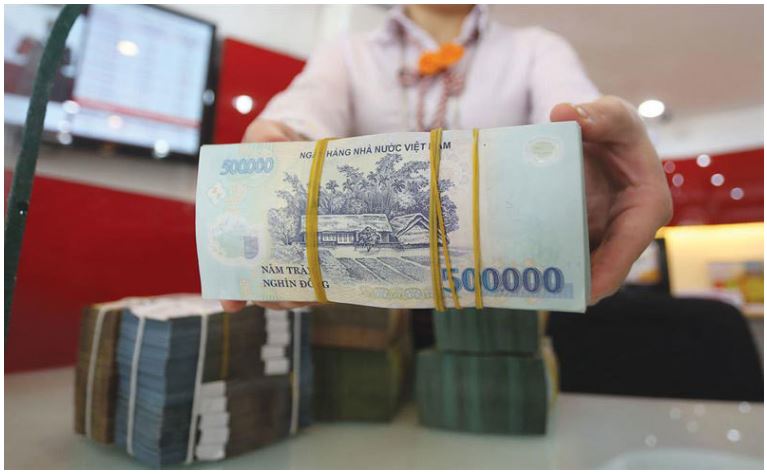Vietnam: Ceiling credit growth rate needs to be removed: economist
According to former deputy director of the Banking Strategy Institute Pham Xuan Hoe, while demand for capital is very high, the credit growth limit has been controlled too strictly, which has put a brake on the economic recovery process.
You are one of the experts asking to remove the credit limit mechanism. What are your arguments?
The State Bank of Vietnam (SBV) began using the tool of credit growth limit in 2011, when the government then issued Resolution 11 on curbing inflation. In 2007-2011, credit grew by 33 percent per annum, and even 53 percent in 2007, which triggered a high inflation rate of 19 percent in 2011.
But after one decade, Vietnam has been controlling inflation and stabilizing the macro economy. In 2020-2021, bearing the impact from Covid-19, the GDP growth rate was just over 2 percent, while the business nearly became stagnant, but the credit still grew by 12 percent and high inflation did not occur.
High inflation did not occur in the first eight months of the year. In other words, pressure by the monetary policy on inflation is not too tough.
More than 10 years ago, the tool of credit growth limit was used because of hot development which led to high inflation. But now we don’t have real estate and securities bubbles.
Meanwhile, demand for capital is very high from businesses and people. In such conditions, strict control over credit growth will put a brake on efforts to recover the economy. Therefore, I believe that it is necessary to remove the credit growth rate limit.
Why do you think it is necessary to remove the limit when the watchdog agency always fears that commercial banks will neglect capital adequacy standards?
The Prime Minister’s Decision 986/QD-TTg has instructed to remove credit limit to use more market tools to implement a strategy on developing a modern central bank.
Moreover, over many years, the central bank has been applying Basel II for commercial banks. To date, nearly 20 banks can meet the standards. The banks control the lending rate based on the mobilized capital in the tier-1 market, which means that they only lend 80 percent of the capital they mobilize from businesses and individuals.
This is a barrier to prevent high credit growth if commercial banks cannot mobilize capital from the economy. Meanwhile, SBV hasn’t pumped more capital into circulation, which means that money supply won’t be too high to raise concerns about inflation.
Also according to Basel II, under Circular 41/TT-NHNN, credit institutions must maintain CAR (capital adequacy ratio) to control lending to high-risk fields when lending by the risk conversion factor. For example, in the real estate sector, the factor applied by SBV is up to 200 percent.
This means that when banks want to provide loans to risky business fields, they have to increase their core capital to satisfy requirements on CAR. So, in order to increase lending to risky fields, they have to increase their core capital or they will be punished. This shows that using the tool of credit growth limit is no longer significant.
Are there any other reasons?
There are many other tools which can replace the credit growth limit to control the credit provided.
SBV, for instance, can use the required reversed ratio and raise the ratio to 5 percent or even 10 percent if it sees the risk of commercial banks expanding credit, which could lead to a shocking rise in money supply (M2).
When raising the required reverse ratio, this means that locking money at credit institutions’ accounts at SBV, causing banks to considerably reduce their capital sources which allow them to increase lending to the economy.
Moreover, through OMO (open market operation), SBV can also launch a kind of bill which commercial banks must buy, possibly with supportive interest rates.
This is a tool which is both market and administrative oriented and is strong and effective if SBV wants to ‘lock’ money of commercial banks to prevent them from expanding credit.
Some commercial banks complain that maintaining the credit growth limit means maintaining the ask-and-grant mechanism with risks for both managers. What do you think?
It’s true. Credit limit is an administrative tool which generates the ask-and-grant mechanism and an unfair environment for commercial banks.
The capital needed for business recovery needs is very large. Many customers are seeing their production recovery stall because banks are running out of credit room.
Tu Giang
Source: https://vietnamnet.vn/en/ceiling-credit-growth-rate-needs-to-be-removed-economist-2058484.html


 English
English




